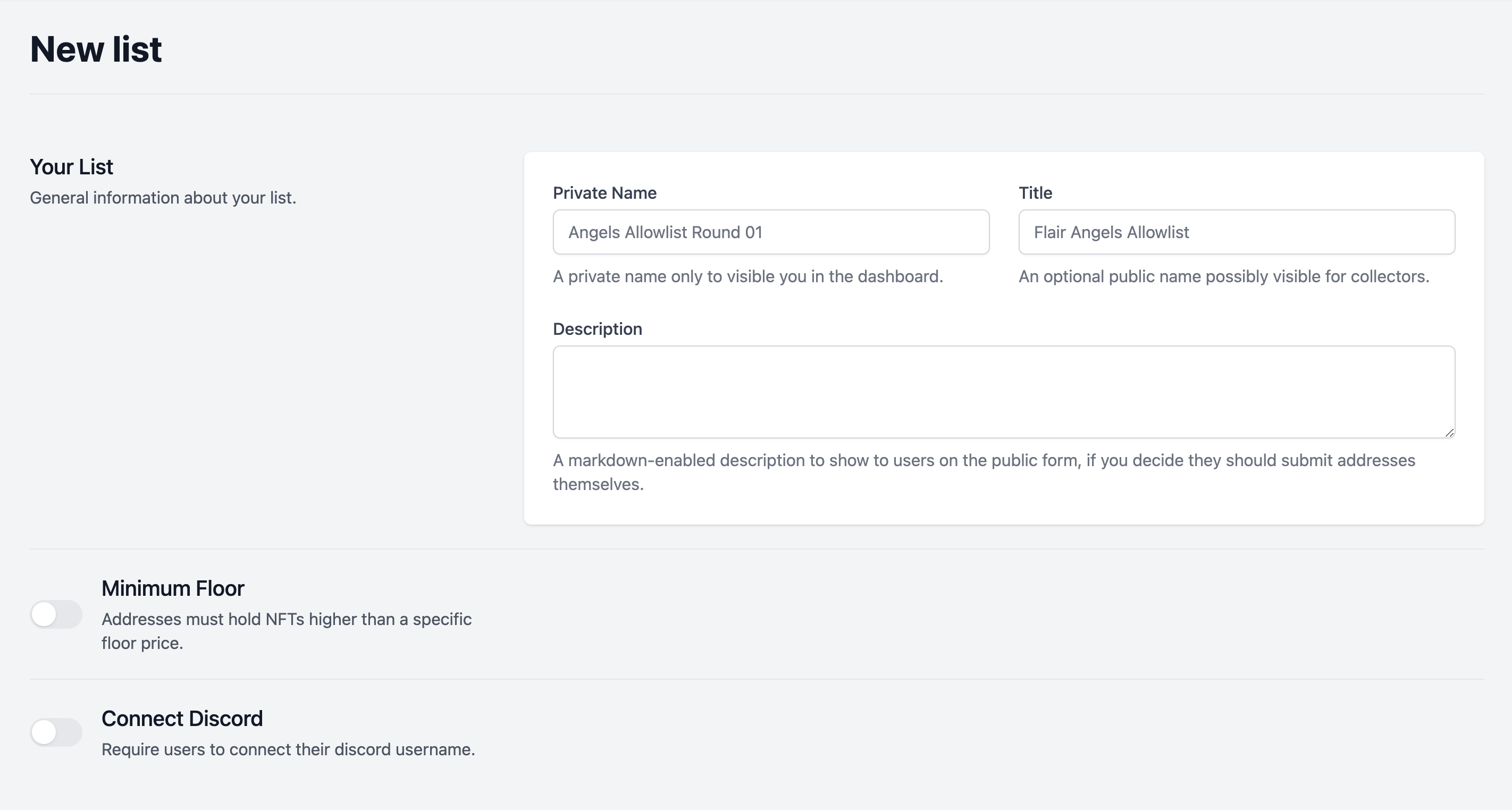Address Lists
Also known as Allowlists or Mintlists, allow you to collect user wallets based on certain conditions.
Dashboard
Easiest way to create and manage lists if through Flair's dashboard.

Recommended
Using dashboard is the preferred approach for working with address lists, as it's a one-time operation and it is not a good investment to work with React hooks or REST APIs if you only plan to launch one or two collections.
React Hooks
Alternatively you use can React hooks to add, remove addresses, generate merkle proofs for your lists.
info
This feature is under development, if you are looking for a specific feature, feel free to hop on our Discord and talk about it.
useAddressListMerkleProofByAddress
When you apply an address list to an NFT collection (e.g. for pre-sale) you are able to get merkle proof for a certain address if they want to mint. Note that in majority of cases you don't need to use this hook directly, refer to usePreSaleMinter if your goal is minting in a pre-sale.
const chainId = 1; // Chain ID, e.g. Ethereum = 1, Matic = 137
const contractAddress = '0x56565656565656565656565656565656' // e.g. NFT collection address
const {
data,
error,
isLoading,
sendRequest: fetchProof,
} = useAddressListMerkleProofByAddress({
address: '0x12341234123412341234123412341234' // e.g. address who likes to mint
treeKey: `${chainId}-${contractAddress}`,
});
// "data" will be an array of string to be passed to pre-sale function
Management Hooks
It recommended to use Flair's dashboard for address lists management, as it might not be a good investment of time. But if you need to you are able to import them from flair-sdk:
- useAddressListCreator
- useAddressList
- useAddressLists
- useAddressListItems
- useAddressListBulkAddressAppender
- useAddressListBulkAddressDeleter
- useAddressListBulkItemDeleter
- useAddressListMerkleTreeCreator
- useAddressListMerkleRoot
View the source code for these hooks to learn about their interfaces.
REST APIs
Although it is recommended to use Flair's dashboard, if you still need to use the APIs, visit REST API Swagger Specs.